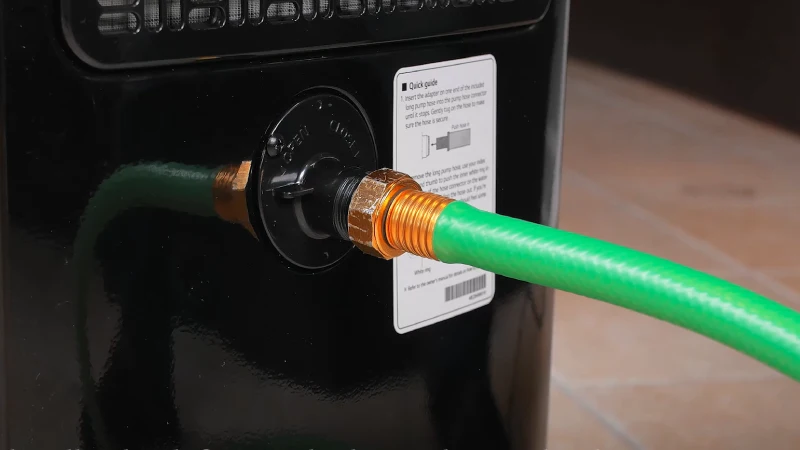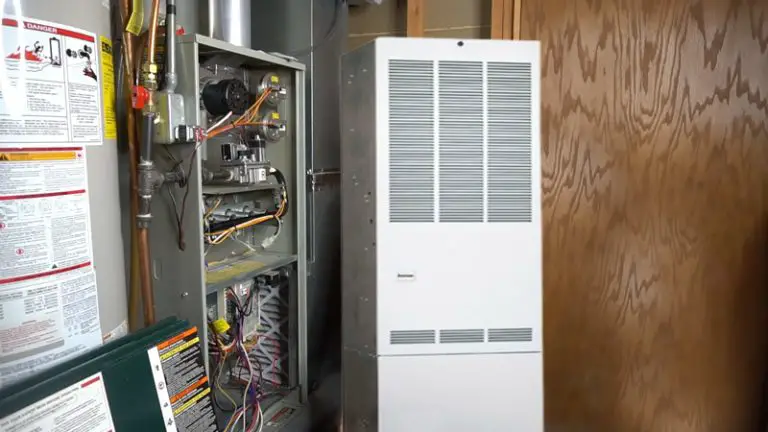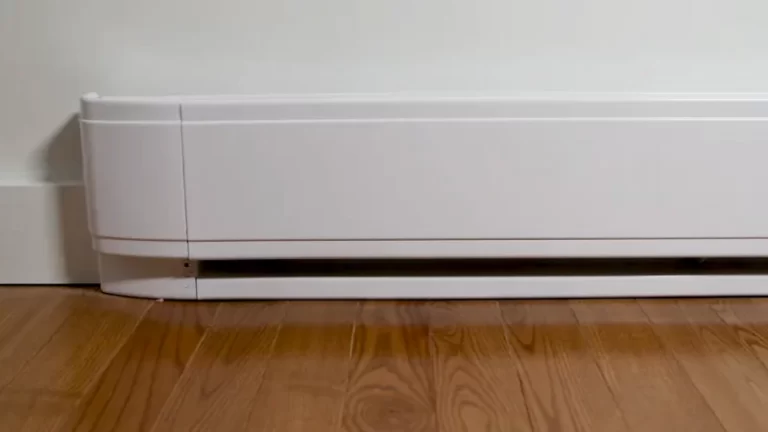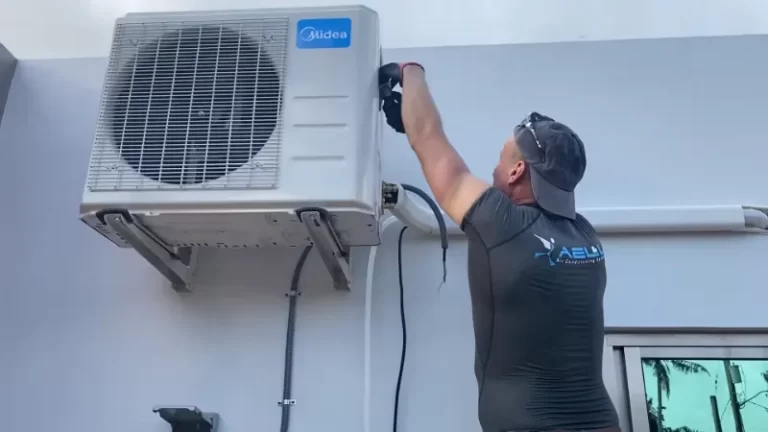Drain Dehumidifier Through Wall [Step by Step Guide]

Controlling the humidity levels in your home is essential for maintaining a healthy and comfortable living environment. With the increasing popularity of dehumidifiers, many homeowners are looking for effective ways to drain the units and maintain optimal humidity levels.
Whether you choose to drain into a pipe, into a sink, or use a motorized pump, there are several options available to suit your specific needs and facilities.
In this article, we will explore the different methods for draining a dehumidifier, including the tools and steps required, and offer insights into the pros and cons of each method.
With this information, you can make an informed decision and ensure that your dehumidifier continues to provide you with a comfortable and healthy living environment.
You'll Learn About
Drain Dehumidifier Through Wall
Draining a dehumidifier through a wall can be a challenge, especially when you want to keep the appearance of your finished basement aesthetically pleasing. One solution is to install a low-voltage box with a blank faceplate and drill a hole through the faceplate for the hose or pipe.
You can also install a brush plate, which can blend in with the wall, to conceal the hose or pipe. Another option is to install several return air vents between the finished and unfinished basement to direct the dry air back into the room.
This will allow you to place the dehumidifier in the unfinished basement and pump the water through the wall and into the floor drain.

It’s important to note that the size of your dehumidifier is crucial in maintaining the proper humidity levels in your basement. If you have a large basement, you may need a larger dehumidifier to effectively cover the whole space. If you have issues with specific rooms, you can install smaller units in those rooms to help remove the humidity more quickly.
- Low Voltage Box and Blank Faceplate: Installing a low voltage box with a blank faceplate and drilling a hole through the faceplate for the hose or pipe to pass through. This method allows the hose or pipe to be concealed while still allowing the dehumidifier to drain effectively.
- Brush Plate: Installing a brush plate in the wall to conceal the hose or pipe. Brush plates can blend in with the wall, making them a more discreet option for draining a dehumidifier.
- Return Air Vents: Installing several return air vents between the finished and unfinished basement to direct the dry air back into the room. This allows you to place the dehumidifier in the unfinished basement and pump the water through the wall and into the floor drain.
- Vinyl Tubing: Using vinyl tubing instead of a rigid PVC pipe to drain the dehumidifier. Vinyl tubing is flexible, making it easier to route through a wall and into a drain.
- Gravity Drain: Placing the dehumidifier on a platform or stand near the wall and running a hose or pipe from the dehumidifier to the floor drain. The water will drain through gravity, eliminating the need to pump it through the wall.
Low Voltage Box and Blank Faceplate Method
The Low Voltage Box and Blank Faceplate Method is a solution for draining a dehumidifier through a wall without sacrificing the aesthetic appearance of the finished basement. This method involves installing a low voltage box with a blank faceplate and drilling a hole through the faceplate for the hose or pipe to pass through.
Installation Steps
- Purchase a low voltage box and a blank faceplate from a home improvement store.
- Cut a hole in the wall where you want the hose or pipe to pass through. The hole should be large enough to accommodate the low voltage box and the hose or pipe.
- Mount the low voltage box into the hole and secure it to the wall.
- Attach the blank faceplate to the low voltage box and drill a hole through the faceplate to accommodate the hose or pipe.
- Connect the hose or pipe from the dehumidifier to the hole in the faceplate.
Benefits of the Low Voltage Box and Blank Faceplate Method
- Conceals the hose or pipe: The low voltage box and blank faceplate conceal the hose or pipe, making it a more discreet option for draining a dehumidifier.
- Easy to install: This method is easy to install and does not require any complicated plumbing or electrical work.
- Affordable: Low voltage boxes and blank faceplates are relatively inexpensive, making this method a cost-effective solution for draining a dehumidifier.
The Low Voltage Box and Blank Faceplate Method is a simple and affordable solution for draining a dehumidifier through a wall without sacrificing the aesthetic appearance of the finished basement.
Brush Plate Method
The Brush Plate Method is a solution for draining a dehumidifier through a wall while maintaining the aesthetic appearance of the finished basement. This method involves installing a brush plate in the wall to conceal the hose or pipe.
Installation Steps
- Purchase a brush plate from a home improvement store.
- Cut a hole in the wall where you want the hose or pipe to pass through. The hole should be large enough to accommodate the brush plate and the hose or pipe.
- Mount the brush plate into the hole and secure it to the wall.
- Connect the hose or pipe from the dehumidifier to the brush plate.
- Ensure that the brush plate is properly secured to the wall to prevent water from leaking through the hole.
Benefits of the Brush Plate Method
- Conceals the hose or pipe: The brush plate conceals the hose or pipe, making it a more discreet option for draining a dehumidifier.
- Easy to install: This method is easy to install and does not require any complicated plumbing or electrical work.
- Affordable: Brush plates are relatively inexpensive, making this method a cost-effective solution for draining a dehumidifier.
- Aesthetically pleasing: Brush plates can blend in with the wall, making them a more aesthetically pleasing option for draining a dehumidifier.
The Brush Plate Method is a simple and affordable solution for draining a dehumidifier through a wall while maintaining the aesthetic appearance of the finished basement.
Return Air Vents Method
The Return Air Vents Method is a solution for draining a dehumidifier through a wall while maintaining the aesthetic appearance of the finished basement. This method involves installing several return air vents between the finished and unfinished basement to direct the dry air back into the room.
Tools Needed
- Return air vents
- Screws or nails
- Drill
- Screwdriver or hammer
Installation Steps
- Purchase return air vents from a home improvement store.
- Cut holes in the wall between the finished and unfinished basement to accommodate the return air vents.
- Install the return air vents into the holes and secure them to the wall using screws or nails.
- Place the dehumidifier in the unfinished basement and connect a hose or pipe from the dehumidifier to the floor drain.
- Ensure that the return air vents are properly secured to the wall and that the dehumidifier is positioned in a location where it can effectively remove moisture from the finished basement.
Benefits of the Return Air Vents Method
- Conceals the hose or pipe: The return air vents conceal the hose or pipe, making it a more discreet option for draining a dehumidifier.
- Improves air circulation: The return air vents improve air circulation between the finished and unfinished basement, allowing the dehumidifier to effectively remove moisture from the finished basement.
- Easy to install: This method is easy to install and does not require any complicated plumbing or electrical work.
- Affordable: Return air vents are relatively inexpensive, making this method a cost-effective solution for draining a dehumidifier.
The Return Air Vents Method is a simple and affordable solution for draining a dehumidifier through a wall while maintaining the aesthetic appearance of the finished basement and improving air circulation between the two spaces.
Vinyl Tubing Method
The Vinyl Tubing Method is a solution for draining a dehumidifier through a wall while maintaining the aesthetic appearance of the finished basement. This method involves using vinyl tubing to connect the dehumidifier to the floor drain.
Tools Needed
- Vinyl tubing
- Hose clamps
- Drill
- Screwdriver or hammer
Installation Steps
- Purchase vinyl tubing and hose clamps from a home improvement store.
- Cut a hole in the wall between the finished and unfinished basement to accommodate the vinyl tubing.
- Connect one end of the vinyl tubing to the dehumidifier and the other end to the floor drain in the unfinished basement.
- Use hose clamps to secure the vinyl tubing to the dehumidifier and floor drain.
- Ensure that the vinyl tubing is properly secured and that there are no leaks.
Benefits of the Vinyl Tubing Method
- Conceals the hose or pipe: The vinyl tubing is a more discreet option for draining a dehumidifier than a rigid PVC pipe.
- Easy to install: This method is easy to install and does not require any complicated plumbing or electrical work.
- Affordable: Vinyl tubing and hose clamps are relatively inexpensive, making this method a cost-effective solution for draining a dehumidifier.
The Vinyl Tubing Method is a simple and affordable solution for draining a dehumidifier through a wall while maintaining the aesthetic appearance of the finished basement.
Gravity Drain Method
The Gravity Drain Method is a solution for draining a dehumidifier through a wall without the use of a pump. This method relies on gravity to drain the water from the dehumidifier into the floor drain.
Tools Needed
- Hose clamps
- Drill
- Screwdriver or hammer
Installation Steps
- Purchase a hose with hose clamps from a home improvement store.
- Cut a hole in the wall between the finished and unfinished basement to accommodate the hose.
- Connect one end of the hose to the dehumidifier and the other end to the floor drain in the unfinished basement.
- Use hose clamps to secure the hose to the dehumidifier and floor drain.
- Place the dehumidifier in the finished basement near the hole in the wall.
- Ensure that the hose is properly secured and that there are no leaks.
Benefits of the Gravity Drain Method
- Easy to install: This method is easy to install and does not require any complicated plumbing or electrical work.
- Affordable: Hoses and hose clamps are relatively inexpensive, making this method a cost-effective solution for draining a dehumidifier.
The Gravity Drain Method is a simple and affordable solution for draining a dehumidifier through a wall without the use of a pump. It relies on gravity to drain the water from the dehumidifier into the floor drain.
Which Method Should You Choose?
The choice of method for draining a dehumidifier through a wall depends on various factors such as personal preference, cost, and installation difficulty.
For those who prioritize aesthetic impact, methods such as the Low Voltage Box and Blank Faceplate or Brush Plate are good options as they are relatively discreet. The Low Voltage Box and Blank Faceplate method allows for a more professional look, while the Brush Plate method is an even simpler solution that is easy to install.
For those who are cost-conscious, methods such as the Return Air Vents, Vinyl Tubing, or Gravity Drain are good options. These methods are relatively inexpensive and do not require complex installations. The Vinyl Tubing method is a good choice for those who prefer a discreet solution, while the Gravity Drain method is a simple solution that does not require a pump.
The best method for draining a dehumidifier through a wall depends on the specific needs and preferences of the individual. Each of the methods has its own advantages and disadvantages, and the decision should be based on factors such as cost, installation difficulty, and aesthetic impact.
Where Should I Drain My Dehumidifier?
There are two main options for draining a dehumidifier: into a pipe or directly into a sink.
Draining Into a Pipe
If you have a pipe that leads to a floor drain, you can connect the dehumidifier’s drain hose to the pipe to allow for continuous draining. This option is ideal for those who do not want to manually empty the water bucket of their dehumidifier.
Draining Into a Sink
If you do not have a pipe that leads to a floor drain, you can drain the dehumidifier directly into a sink. This option requires a motorized pump, which can be found in some dehumidifier models. Simply connect a water hose to the dehumidifier’s drain pump hole, and then place the other end of the hose inside a sink or basin.
Regardless of which option you choose, it is important to ensure that the drain hose is properly secured and that there are no leaks. You should also periodically check the drain hose for any blockages or clogs, and clean the hose if necessary.
The choice of where to drain your dehumidifier depends on the specific needs and facilities of your home. Both options have their own advantages and disadvantages, and the decision should be based on factors such as convenience, ease of installation, and cost.
How Do You Drain a Dehumidifier Without a Floor Drain?
Draining a Dehumidifier Without a Floor Drain: Step-by-Step Guide
Tools Needed
- Motorized pump dehumidifier
- Water hose
- Sink or basin
Step 1: Choose a Dehumidifier With a Motorized Pump
Ensure that the dehumidifier you choose has a built-in motorized pump, which will allow you to drain the water directly into a sink or basin.
Step 2: Connect the Water Hose
Attach one end of the water hose to the drain pump hole of the dehumidifier.
Step 3: Place the Other End of the Hose in a Sink or Basin
Place the other end of the hose in a sink or basin that is located near the dehumidifier.
Step 4: Turn on the Dehumidifier
Turn on the dehumidifier and allow it to run as normal. The water will be pumped from the dehumidifier’s water bucket into the sink or basin.
Step 5: Check for Leaks and Blockages
Periodically check the water hose for any leaks or blockages. Clean the hose if necessary to ensure that the water is flowing freely.
Draining a dehumidifier without a floor drain is a relatively simple process if you have a dehumidifier with a motorized pump. The steps and tools required are straightforward, and with proper maintenance, you can ensure that your dehumidifier continues to function effectively.
Conclusion
Controlling the humidity levels in your home is important for maintaining a healthy and comfortable living environment. A dehumidifier is a useful tool for achieving this goal, but it is important to consider how to drain the unit effectively.
There are several options available, including draining into a pipe, draining into a sink, and using a motorized pump. The choice of method will depend on the specific needs and facilities of your home, and factors such as cost, convenience, and aesthetic impact should be taken into consideration.
Regardless of which method you choose, it is important to ensure that the drain hose is properly secured and that there are no leaks. With proper maintenance and regular checks, you can ensure that your dehumidifier continues to function effectively and provide you with a comfortable and healthy living environment.



